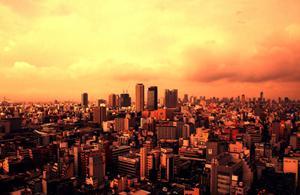Infrastructure protectionOsaka Basin quake map identifies high-rise buildings at risk
The Osaka Basin, Japan is home to many high-rise buildings which sit atop its thick soft sediments, vulnerable to long-period strong ground motions that last minutes. A new map created by Japanese researchers is intends to guide engineers and city planners in new construction and identifies existing buildings with the potential of resonance vibration.

High-rise buildings in the Osaka Basin are at risk // Source: baomoi.com
The Osaka Basin, Japan is home to many high-rise buildings which sit atop its thick soft sediments, vulnerable to long-period strong ground motions that last minutes. A new map created by Japanese researchers is intends to guide engineers and city planners in new construction and identifies existing buildings with the potential of resonance vibration. A Seismological Society of America release report that the Osaka Basin in western Japan is surrounded by short mountain ranges, affected by large (M 8+) interplate earthquakes generated outside of the basin. Interplate earthquakes occur at the boundary between two tectonic plates. Historical literature suggests interplate earthquakes have occurred here repeatedly, recurring approximately every 100 years.
Mitigation of future large earthquake damage is of critical importance to the area, particularly given its large population and many high-rise buildings. Using a 3D subsurface structure model of the Osaka Basin, ground motion records and analysis of the basin’s geological features, researchers computed the predominate periods of earthquake motion for the entire basin. The resulting map provides useful information for engineers to design earthquake resistant buildings.
While most high-rise buildings in the Osaka Basin, according to this study, show little risk of vibrating resonantly with strong ground motion, the authors suggest that the map “provides a warning concerning resonant vibration to high-rise buildings.” The authors identify specific high-rise buildings that should be re-evaluated for seismic safety and retrofitting.
— Read more in Ken Miyakoshi et al., “Long predominant period map and detection of resonant high-rise buildings in the Osaka Basin, western Japan,” Bulletin of the Seismological Society of America 103, no. 1(February 2013)
